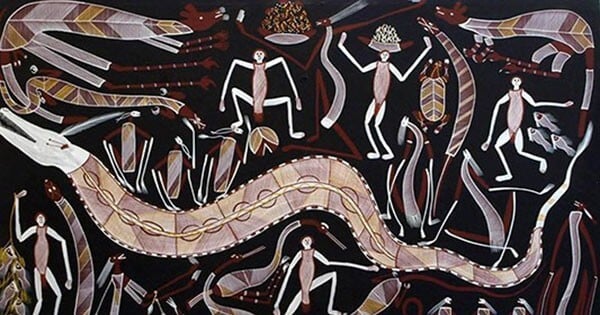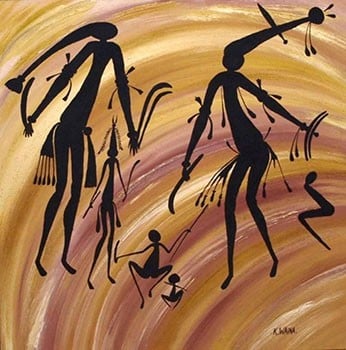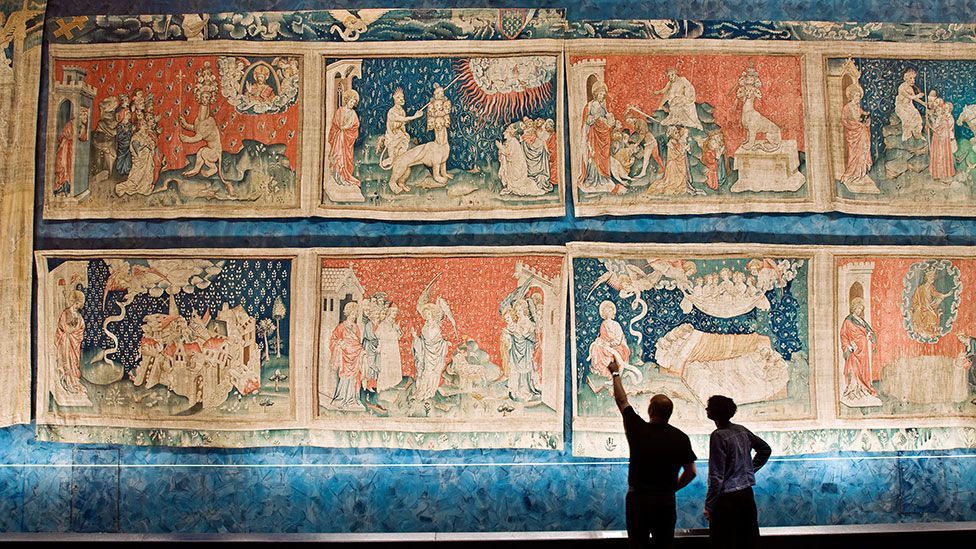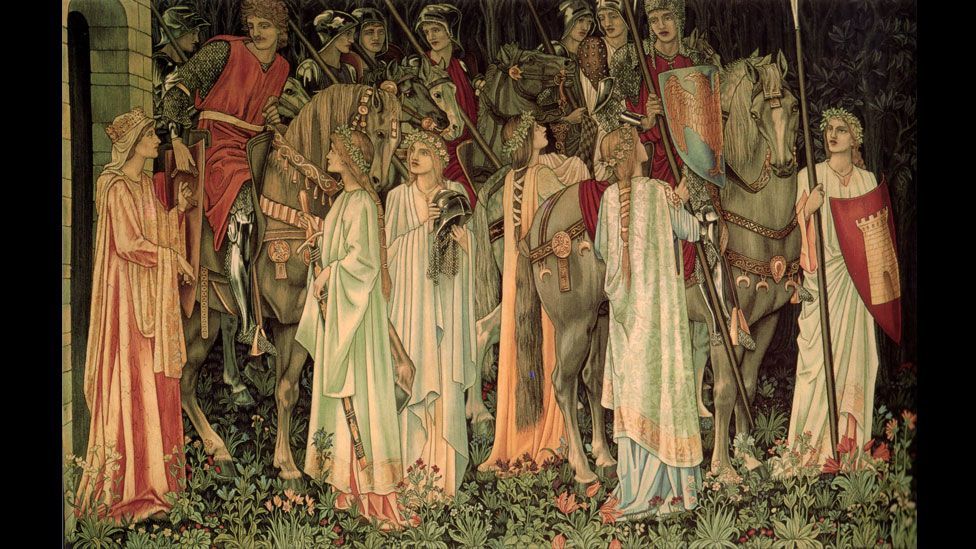Unveiling the Tapestry of Time: What is the Main Dreamtime?
Unveiling the Tapestry of Time: What is the Main Dreamtime?

The term "Dreamtime" evokes images of ancient stories, mystical landscapes, and a profound connection to the Earth. But what exactly is the Dreamtime? How does it shape the lives of Indigenous Australians? And what makes it such a powerful concept? This article delves deep into the heart of this ancient philosophy, unraveling its layers and exploring its enduring significance.
A Realm Beyond Time and Space:
Related Articles: Unveiling the Tapestry of Time: What is the Main Dreamtime?
- Unpacking The Nuances: Understanding Aboriginal And Indigenous
- Unveiling The Timeless Tapestry: What Is Dreamtime In Aboriginal Art?
- The Resilient Giants: Exploring The Iconic Trees Of The Australian Outback
- Guardians Of The Land: The Resilient Spirit Of The Colville Confederated Tribes
- A Taste Of The Outback: Exploring Australia’s Unique Native Fruits
The Dreamtime, also known as "Tjukurpa" in many Aboriginal languages, is not merely a period in the past but a timeless and ever-present reality. It’s a realm where the ancestral beings, who created the land and its creatures, continue to exist. These beings are not simply mythical figures, but powerful forces that shape the present and guide the future. Their actions and journeys are etched into the landscape, forming the very fabric of the Earth.
The Foundation of Aboriginal Culture:
The Dreamtime serves as the bedrock of Aboriginal culture, providing a framework for understanding the world, navigating relationships, and guiding ethical behavior. It’s a living history, a spiritual map, and a blueprint for how to live in harmony with the land and each other.
The Ancestral Beings:
Each tribe in Australia has its own unique set of ancestral beings, each with their own stories and significance. These beings, often depicted as animals, birds, or human-like figures, embody specific attributes, powers, and responsibilities. For example, the Rainbow Serpent, a powerful and benevolent being, is often associated with water and fertility.
The Creation of the Land:
The Dreamtime stories explain the creation of the land, its features, and its inhabitants. These stories describe how the ancestral beings traveled across the land, shaping its contours, establishing sacred sites, and giving birth to plants, animals, and humans. The landscape itself becomes a living testament to the Dreamtime, with rock formations, waterholes, and natural features representing the journeys and actions of the ancestral beings.
The Importance of Storytelling:

Storytelling plays a crucial role in transmitting the Dreamtime knowledge from generation to generation. Elders, the keepers of this wisdom, share these stories through song, dance, and art, ensuring that the Dreamtime remains a vibrant and living tradition. These stories are not merely entertaining narratives, but powerful tools for understanding the world, connecting with ancestors, and maintaining cultural identity.
Connection to the Land:
The Dreamtime fosters a deep connection to the land, emphasizing the interconnectedness of all things. The land is not merely a resource to be exploited but a sacred entity that must be respected and cared for. This respect extends to all living creatures, with each species playing a vital role in the intricate web of life.
A Timeless Legacy:
The Dreamtime is not a static concept but a dynamic force that continues to evolve and adapt. It’s a living tradition that has endured for millennia, constantly being reinterpreted and reimagined by each generation. Its enduring power lies in its ability to connect individuals to their ancestors, their land, and their culture, fostering a sense of belonging and purpose.

The Dreamtime and Modern Life:
In today’s world, the Dreamtime continues to hold great significance for Aboriginal people. It provides a framework for understanding contemporary issues, such as environmental concerns, social justice, and cultural preservation. It also serves as a source of inspiration for artistic expression, activism, and social change.
The Dreamtime and Non-Indigenous Australians:
While the Dreamtime is an integral part of Aboriginal culture, it’s also a valuable resource for non-Indigenous Australians. By learning about the Dreamtime, we can gain a deeper understanding of Aboriginal history, culture, and values. This understanding can foster respect, empathy, and reconciliation, paving the way for a more inclusive and harmonious society.
Beyond the Surface:

The Dreamtime is a complex and multifaceted concept that cannot be fully captured in words. It’s a tapestry woven from stories, traditions, beliefs, and practices that have been passed down for generations. To truly understand the Dreamtime, one must immerse oneself in its richness, listen to its stories, and experience its power firsthand.
FAQ: Understanding the Main Dreamtime
1. What is the difference between the Dreamtime and the "Creation Story"?
While both concepts relate to the origins of the world, the Dreamtime goes beyond a simple creation story. It’s a multifaceted philosophy that encompasses the ancestral beings, their actions, and their ongoing influence on the present and future. It’s a living tradition that shapes every aspect of Aboriginal culture, from art and language to social structures and environmental stewardship.
2. Is the Dreamtime a religious belief?
The Dreamtime is not a religion in the traditional sense. It’s a cultural framework that encompasses both spiritual and practical aspects of life. While it involves belief in ancestral beings and spiritual forces, it’s also a source of knowledge, wisdom, and ethical guidance.
3. How can non-Indigenous Australians learn about the Dreamtime?
There are many ways to learn about the Dreamtime. Visiting Aboriginal art galleries and museums, attending cultural performances, and listening to elders share their stories are valuable experiences. Engaging with Aboriginal communities and respecting their cultural protocols is essential for a meaningful understanding.
4. What is the importance of the Dreamtime in contemporary society?
The Dreamtime remains relevant in contemporary society by providing a framework for understanding and addressing current challenges. It offers insights into environmental sustainability, social justice, and cultural preservation, inspiring action and fostering a sense of responsibility for future generations.
5. How can I show respect for the Dreamtime?
Respecting the Dreamtime involves acknowledging its significance, listening to Aboriginal voices, and engaging with the stories and traditions it represents. It also means respecting the land and its inhabitants, recognizing the interconnectedness of all things, and embracing the values of cultural diversity and inclusion.
Conclusion:
The Dreamtime is a powerful and enduring concept that transcends time and space. It’s a testament to the wisdom and resilience of Aboriginal people, offering a rich tapestry of knowledge, traditions, and beliefs. By understanding the Dreamtime, we can gain a deeper appreciation for Aboriginal culture, foster a sense of respect and empathy, and contribute to a more just and sustainable future for all.

Closure
Thus, we hope this article has provided valuable insights into Unveiling the Tapestry of Time: What is the Main Dreamtime?. We hope you find this article informative and beneficial. See you in our next article!


